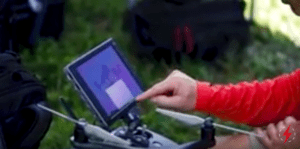The 2018 Hurricane season is already off to a deadly start, and disaster response teams are honing their preparations. Drones have become a critical part of disaster preparation, response, and rebuild. While many Floridians are getting ready to evacuate, Miami-based Airborne Response is getting ready to fly.
The following is a press release from Airborne Response.
As tropical cyclone forecasters at the National Hurricane Center closely monitor the strengthening and movement of Hurricane Michael, Governor Rick Scott has declared a State of Emergency in northern Florida prompting government and industry to activate disaster response contracts. Along with the usual debris management and power restoration contractors, a new industry has found its way into the emergency management mix – aerial drone services from companies like Miami-based Airborne Response.
“We were specifically created to help government and industry respond to emergencies and major disasters by providing cost effective, high-resolution aerial imagery captured by unmanned aircraft systems,” says Christopher Todd, President of Airborne Response. “This data becomes crucial for emergency managers who need to rapidly assess damage to critical infrastructure like key buildings, highways, bridges, communications towers, and power lines. The photos also help insurance companies more quickly and effectively process claims.”
Customers in the energy, insurance, and telecommunications sectors have been extremely proactive in planning the drone response for Michael, according to Todd. He and his team have been coordinating daily with key clients including Citizens Property Insurance Corporation of Florida, for which Airborne Response serves as a contracted vendor.
Unlike other drone service networks which run a first-come, low-bid pricing model, Airborne Response trains their remote pilots for these types of emergencies throughout the calendar year with web-based FEMA courses, mission planning exercises, and preparedness skills development. He says many remote pilots even travelled to Miami earlier this summer to attend a specialized UAS Disaster Camp at Florida International University. There they received classroom instruction, live operator skills training, and were offered the opportunity to work alongside first responders in Florida’s first comprehensive UAS disaster exercise which included drones and helicopters operating close to one another in true disaster scenarios.
“The type of clients we work with are looking for us to provide professional remote pilots operating commercial-grade gear with a specific level of subject matter expertise,” says Tom Oatmeyer, Chief Pilot for Airborne Response. “Almost anyone can fly a drone, but it takes a certain type of individual who is willing to develop the skill sets necessary to operate UAS effectively in the chaos surrounding a major disaster. Those are the pilots we want on our team.”
Both Todd and Oatmeyer agree that the Airborne Response team is well-prepared heading into Hurricane Michael. Yet they also agree that every big storm is different, and you don’t really know what to expect until the storm actually makes landfall.
“Irma was a wind event with some flooding, Florence was primarily a flood event with some wind,” says Todd. “We’ll get to know more about Michael over the next few days.”
“Michael looks to be a very dangerous storm,” states Oatmeyer. “But the greatest asset in aviation is a well-trained pilot, and Airborne Response remote pilots have been specifically trained to operate in these types of major disasters.”
For more information about Airborne Response and their specialized network of disaster response remote pilots, please visit: http://airborneresponse.com.
Miriam McNabb is the Editor-in-Chief of DRONELIFE and CEO of JobForDrones, a professional drone services marketplace, and a fascinated observer of the emerging drone industry and the regulatory environment for drones. Miriam has penned over 3,000 articles focused on the commercial drone space and is an international speaker and recognized figure in the industry. Miriam has a degree from the University of Chicago and over 20 years of experience in high tech sales and marketing for new technologies.
For drone industry consulting or writing, Email Miriam.
TWITTER:@spaldingbarker
Subscribe to DroneLife here.

